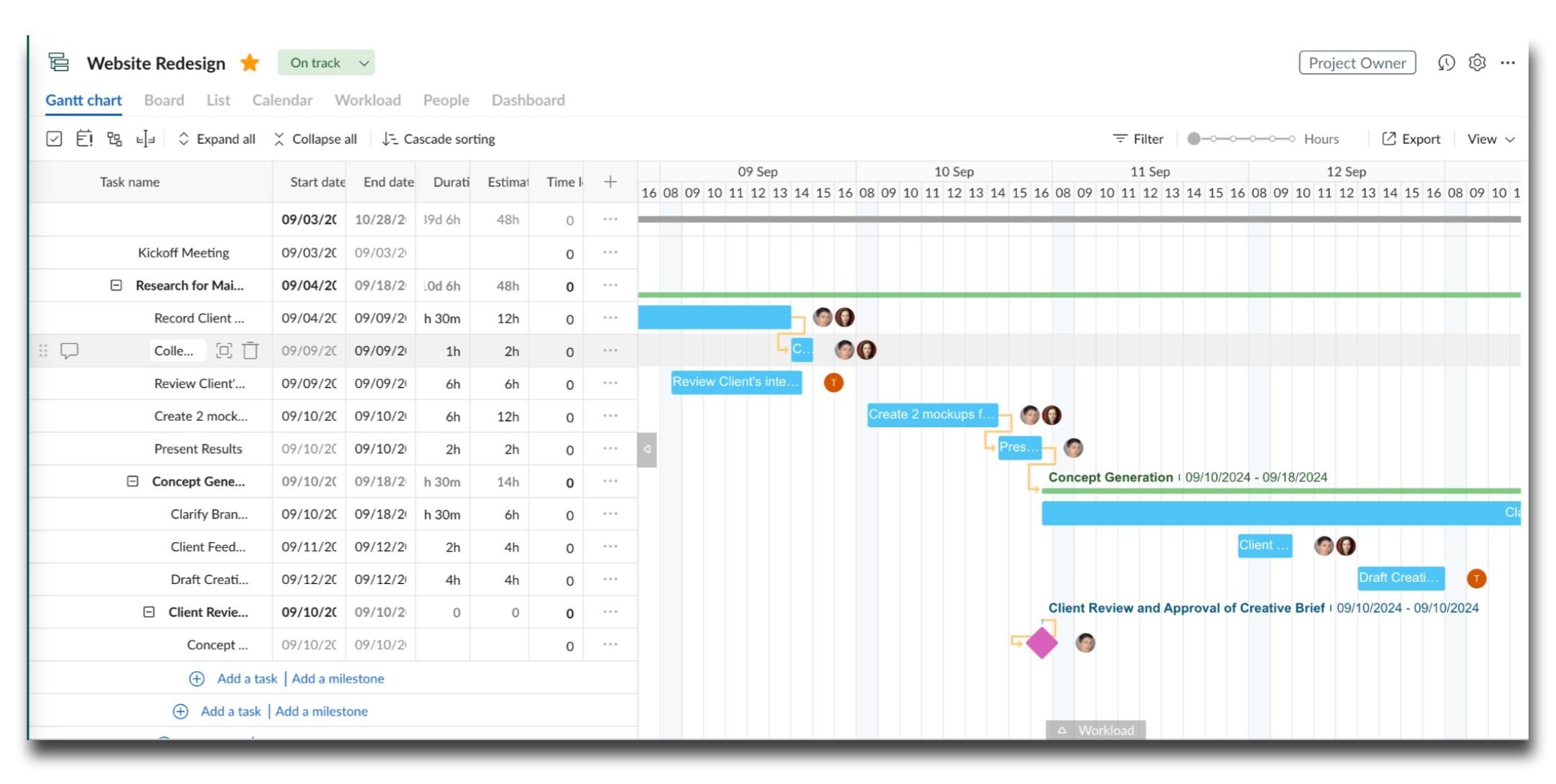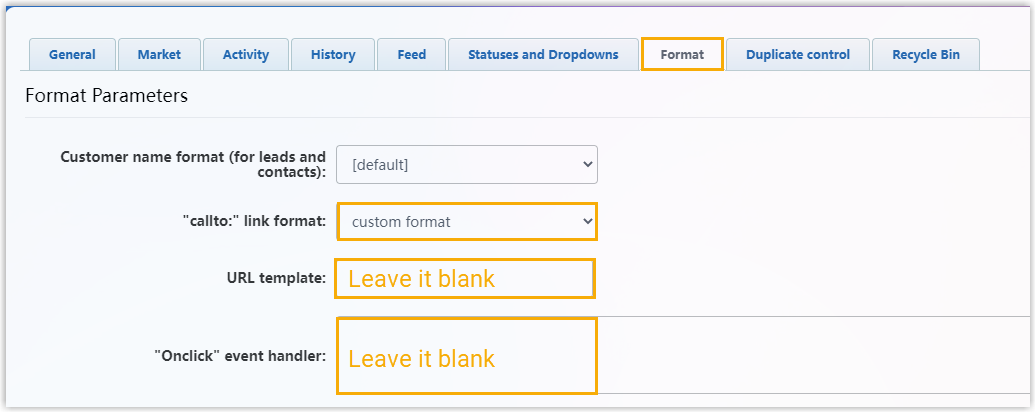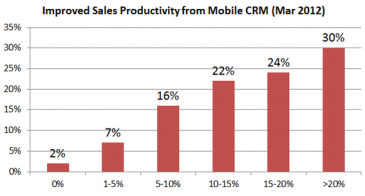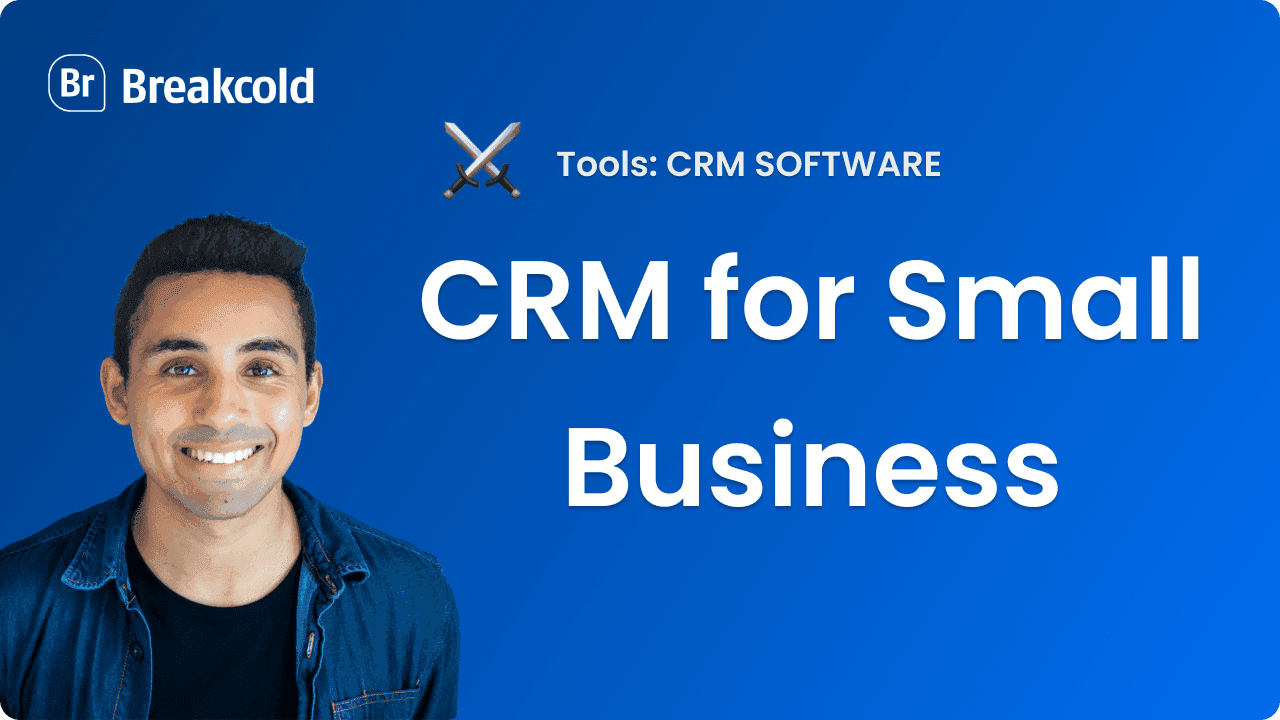CRM Marketing Mastery: A/B Testing Your Way to Exponential Growth
Unlocking CRM Marketing Potential Through A/B Testing: A Comprehensive Guide
In the ever-evolving landscape of digital marketing, Customer Relationship Management (CRM) has become more than just a tool; it’s the engine that drives customer engagement, boosts loyalty, and fuels revenue growth. But simply having a CRM system isn’t enough. To truly harness its power, you need a strategic approach, and at the heart of that approach lies A/B testing. This comprehensive guide will delve into the synergistic relationship between CRM marketing and A/B testing, providing you with the knowledge and tools to transform your marketing efforts and achieve exponential growth.
We’ll explore the fundamental principles of CRM marketing, dissect the intricacies of A/B testing, and, most importantly, show you how to seamlessly integrate these two powerhouses to create high-impact campaigns. Get ready to elevate your marketing game!
Understanding the Pillars: CRM Marketing and A/B Testing
CRM Marketing: The Foundation of Customer-Centricity
Customer Relationship Management (CRM) marketing is a strategic approach that prioritizes understanding and engaging with your customers throughout their entire journey. It’s about building meaningful relationships, personalizing experiences, and driving long-term loyalty. CRM systems are the technological backbone of this strategy, providing a centralized hub for storing, managing, and analyzing customer data.
Here’s what makes CRM marketing so crucial:
- Enhanced Customer Understanding: CRM systems allow you to gather comprehensive customer data, including demographics, purchase history, website behavior, and communication preferences. This data provides invaluable insights into customer needs, preferences, and pain points.
- Personalized Communication: Armed with customer insights, you can tailor your marketing messages and offers to resonate with individual customers. Personalization leads to higher engagement rates, improved conversion rates, and increased customer satisfaction.
- Improved Customer Segmentation: CRM enables you to segment your customer base into distinct groups based on shared characteristics. This allows you to create targeted marketing campaigns that are highly relevant to each segment.
- Streamlined Marketing Automation: CRM systems often integrate with marketing automation tools, enabling you to automate repetitive tasks such as email campaigns, lead nurturing, and social media posting. This frees up your marketing team to focus on strategic initiatives.
- Data-Driven Decision Making: CRM provides valuable data analytics, allowing you to track key performance indicators (KPIs) such as customer acquisition cost (CAC), customer lifetime value (CLTV), and conversion rates. This data helps you make informed decisions about your marketing strategies and optimize your campaigns for maximum impact.
A/B Testing: The Engine of Continuous Optimization
A/B testing, also known as split testing, is a method of comparing two versions of a marketing asset (e.g., email, landing page, ad) to determine which one performs better. It involves randomly showing different versions of the asset to different segments of your audience and then measuring which version generates the best results based on a predefined metric (e.g., click-through rate, conversion rate, revenue).
Here’s why A/B testing is essential for CRM marketing success:
- Data-Driven Insights: A/B testing provides concrete data on what resonates with your audience. It removes guesswork and allows you to make decisions based on empirical evidence.
- Continuous Improvement: A/B testing is an iterative process. By constantly testing and refining your marketing assets, you can continuously improve their performance and achieve better results over time.
- Increased Conversions: By optimizing your marketing assets based on A/B testing results, you can significantly increase your conversion rates.
- Improved Customer Experience: A/B testing helps you tailor your marketing messages and offers to meet the needs and preferences of your audience, leading to a better customer experience.
- Higher ROI: By optimizing your marketing campaigns, A/B testing helps you maximize your return on investment (ROI).
The Marriage of CRM Marketing and A/B Testing: A Powerful Partnership
When you combine the power of CRM marketing with the data-driven insights of A/B testing, you create a formidable marketing engine. CRM provides the customer data and segmentation capabilities, while A/B testing provides the means to optimize your marketing efforts for maximum impact. The synergy between these two disciplines is where true marketing magic happens.
Key Benefits of Integrating CRM Marketing and A/B Testing:
- Targeted and Personalized Campaigns: CRM data allows you to create highly targeted and personalized A/B tests. You can test different variations of your marketing messages and offers based on customer demographics, purchase history, and behavior.
- Improved Segmentation: A/B testing can help you refine your customer segmentation strategies. By testing different variations of your marketing assets with different segments, you can identify the segments that respond best to your campaigns.
- Optimized Customer Journey: A/B testing can be used to optimize every touchpoint in the customer journey, from initial contact to post-purchase engagement.
- Increased Conversion Rates: By optimizing your marketing assets based on A/B testing results, you can significantly increase your conversion rates across all stages of the customer journey.
- Enhanced Customer Experience: By personalizing your marketing messages and offers based on A/B testing results, you can create a more relevant and engaging customer experience.
- Data-Driven Decision Making: The combination of CRM data and A/B testing results provides you with a wealth of data to inform your marketing decisions.
Implementing A/B Testing in Your CRM Marketing Strategy: A Step-by-Step Guide
Implementing A/B testing in your CRM marketing strategy can seem daunting at first, but by following a structured approach, you can ensure that your tests are successful and provide valuable insights. Here’s a step-by-step guide:
Step 1: Define Your Goals and Objectives
Before you start testing, it’s crucial to define your goals and objectives. What do you want to achieve with your A/B tests? Are you trying to increase click-through rates, conversion rates, or revenue? Having clear goals will help you design your tests and measure their success. Here are some examples of potential goals:
- Increase email open rates
- Boost click-through rates on call-to-action (CTA) buttons
- Improve landing page conversion rates
- Increase sales from a specific product
- Enhance customer engagement with a particular campaign
Make sure your goals are SMART: Specific, Measurable, Achievable, Relevant, and Time-bound.
Step 2: Identify Key Metrics and KPIs
Once you’ve defined your goals, you need to identify the key metrics and KPIs that you’ll use to measure your success. These metrics should align with your goals. For example, if your goal is to increase email open rates, your key metric would be email open rate. Other important KPIs to consider include:
- Click-Through Rate (CTR): The percentage of people who click on a link in your email or on your landing page.
- Conversion Rate: The percentage of people who complete a desired action, such as making a purchase or filling out a form.
- Bounce Rate: The percentage of people who leave your website or landing page without interacting with it.
- Customer Acquisition Cost (CAC): The cost of acquiring a new customer.
- Customer Lifetime Value (CLTV): The predicted revenue a customer will generate over their lifetime.
- Return on Investment (ROI): The profit generated from your marketing campaigns.
Step 3: Segment Your Audience
CRM systems excel at customer segmentation. Before launching your A/B tests, segment your audience based on relevant criteria. This could include demographics, purchase history, website behavior, or engagement levels. Segmenting your audience allows you to create more targeted and personalized tests and gain more granular insights. Consider these segmentation strategies:
- Demographic Segmentation: Age, gender, location, income, education.
- Behavioral Segmentation: Purchase history, website activity, email engagement, social media interactions.
- Psychographic Segmentation: Lifestyle, values, interests, attitudes.
- RFM Segmentation: Recency, Frequency, Monetary value (used to identify valuable customers).
Step 4: Generate Hypotheses
Formulate clear hypotheses before you start your A/B tests. A hypothesis is an educated guess about what you expect to happen. It should be based on your understanding of your audience and your marketing objectives. Your hypothesis should be testable and specific. For example: “Changing the subject line of our email to include the customer’s name will increase open rates by 10%.”
Step 5: Choose What to Test
There are countless elements you can test in your CRM marketing campaigns. Here are some ideas to get you started:
- Email Subject Lines: Test different subject lines to see which ones get the most opens.
- Email Body Content: Experiment with different email copy, images, and calls-to-action.
- Landing Page Headlines: Test different headlines to see which ones resonate with your audience.
- Landing Page Calls-to-Action (CTAs): Test different CTA buttons and text to see which ones drive the most conversions.
- Email Send Times: Experiment with different send times to see when your audience is most engaged.
- Personalization: Test different levels of personalization, such as including the customer’s name in the email or recommending products based on their purchase history.
- Segmentation: Test different customer segments to see which ones respond best to your campaigns.
Step 6: Create Variations
Once you’ve decided what to test, create variations of your marketing assets. Make sure that you only change one element at a time. This will help you isolate the impact of each change and accurately measure its effectiveness. For example, if you’re testing email subject lines, create two versions of the email, one with the original subject line and one with a new subject line. If you’re testing a landing page, create two versions, one with the original headline and one with a new headline.
Step 7: Run Your Test
Set up your A/B test using your CRM system or a dedicated A/B testing tool. Make sure that you randomly split your audience between the different variations. This will ensure that your results are statistically valid. Run your test for a sufficient amount of time to gather enough data. The length of your test will depend on your traffic volume and conversion rates. It’s essential to let your test run long enough to achieve statistical significance. Statistical significance means that the results of your test are unlikely to be due to chance.
Step 8: Analyze the Results
Once your test is complete, analyze the results to determine which variation performed best. Look at your key metrics and KPIs to see which variation generated the best results. Use A/B testing tools or your CRM analytics to help you with this analysis. Pay attention to statistical significance to ensure the results are reliable. Don’t jump to conclusions based on small differences. Ensure your results are statistically significant before making any changes.
Step 9: Implement and Iterate
Based on the results of your A/B test, implement the winning variation in your CRM marketing campaigns. Don’t stop there! A/B testing is an ongoing process. Continuously test and refine your marketing assets to improve their performance over time. Use the insights gained from your tests to inform your marketing strategy and make data-driven decisions.
Step 10: Document Your Findings
Keep a detailed record of all your A/B tests, including your goals, hypotheses, variations, results, and conclusions. This documentation will help you track your progress, learn from your successes and failures, and inform future A/B tests. Documenting your findings allows you to share insights with your team and build institutional knowledge.
Tools and Technologies for CRM Marketing A/B Testing
Several tools and technologies can streamline your CRM marketing A/B testing efforts. Choosing the right tools will depend on your specific needs and budget. Here are some popular options:
CRM Systems with A/B Testing Capabilities:
- HubSpot: A comprehensive CRM platform with built-in A/B testing features for emails, landing pages, and website content.
- Salesforce: A leading CRM platform with robust marketing automation capabilities and integrations with A/B testing tools.
- Zoho CRM: An affordable CRM platform with email marketing features and A/B testing functionality.
- ActiveCampaign: A CRM and marketing automation platform with excellent A/B testing capabilities, especially for email campaigns.
Dedicated A/B Testing Tools:
- Optimizely: A powerful A/B testing platform for websites and mobile apps.
- VWO (Visual Website Optimizer): A user-friendly A/B testing platform with a visual editor.
- Google Optimize: A free A/B testing tool that integrates with Google Analytics.
Email Marketing Platforms with A/B Testing:
- Mailchimp: A popular email marketing platform with A/B testing features for subject lines and email content.
- ConvertKit: An email marketing platform specifically designed for creators, with A/B testing for email campaigns.
- GetResponse: A comprehensive marketing platform with email marketing, automation, and A/B testing features.
Best Practices for CRM Marketing A/B Testing
To maximize the effectiveness of your CRM marketing A/B testing, follow these best practices:
- Start Small: Don’t try to test everything at once. Focus on testing one element at a time to isolate the impact of each change.
- Focus on High-Impact Elements: Prioritize testing the elements that are most likely to have a significant impact on your results, such as subject lines, headlines, and CTAs.
- Test with Statistical Significance: Make sure your tests run long enough to achieve statistical significance.
- Segment Your Audience: Segment your audience to create more targeted and personalized tests.
- Analyze Your Results: Don’t just look at the headline numbers. Dig deeper and analyze the data to understand why certain variations performed better than others.
- Iterate and Refine: A/B testing is an ongoing process. Continuously test and refine your marketing assets to improve their performance over time.
- Document Everything: Keep a detailed record of all your A/B tests, including your goals, hypotheses, variations, results, and conclusions.
- Prioritize Mobile Optimization: Ensure your tests are optimized for mobile devices, as a significant portion of your audience likely accesses your content on their phones.
- Consider the User Experience: Always consider the user experience when designing your tests. Make sure that your variations are user-friendly and easy to understand.
- Stay Organized: Organize your tests by campaign, segment, or element to keep track of your progress and results.
Common Mistakes to Avoid in CRM Marketing A/B Testing
While A/B testing is a powerful tool, it’s easy to make mistakes that can undermine your efforts. Here are some common pitfalls to avoid:
- Testing Too Many Elements at Once: Changing multiple elements simultaneously makes it difficult to determine which changes are driving the results.
- Not Running Tests Long Enough: Running tests for too short a time can lead to inaccurate results.
- Ignoring Statistical Significance: Making decisions based on results that are not statistically significant can lead to errors.
- Testing the Wrong Elements: Focusing on elements that are unlikely to have a significant impact on your results.
- Not Segmenting Your Audience: Failing to segment your audience can lead to inaccurate results and missed opportunities.
- Not Analyzing Your Results: Simply looking at the headline numbers without digging deeper into the data.
- Not Iterating and Refining: Stopping after one test instead of continuously testing and refining your marketing assets.
- Ignoring the Customer Journey: Failing to consider the entire customer journey when designing your tests.
- Not Documenting Your Findings: Failing to keep a detailed record of your tests.
- Not Adapting to Changes: Failing to adapt your testing strategy to changes in the market or your business.
Real-World Examples of Successful CRM Marketing A/B Testing
Let’s look at some real-world examples of how businesses have successfully used CRM marketing A/B testing to improve their results:
Example 1: Email Subject Line Optimization
Scenario: An e-commerce company wanted to increase email open rates for its promotional emails. They hypothesized that using the customer’s name in the subject line would increase open rates.
A/B Test: They created two email variations. Version A used a generic subject line, and Version B used a subject line that included the customer’s name. They sent the emails to a segmented list of customers.
Results: Version B, with the personalized subject line, had a 20% higher open rate than Version A.
Conclusion: Personalizing subject lines significantly improved email open rates. They implemented the personalized subject line strategy across all promotional emails.
Example 2: Landing Page Optimization
Scenario: A software company wanted to increase conversion rates on its landing page for a free trial offer. They suspected that the headline was not effectively communicating the value proposition.
A/B Test: They created two landing page variations. Version A had the original headline, and Version B had a new headline that focused on the benefits of the software. They split traffic evenly between the two pages.
Results: Version B, with the benefit-focused headline, had a 15% higher conversion rate than Version A.
Conclusion: A compelling headline that clearly communicated the value proposition significantly improved conversion rates. They implemented the new headline on the landing page.
Example 3: Call-to-Action Optimization
Scenario: A non-profit organization wanted to increase donations on its website. They hypothesized that changing the call-to-action button text would encourage more donations.
A/B Test: They created two versions of the donation button. Version A used the text “Donate Now”, and Version B used the text “Give Today”. They tested the buttons on their donation page.
Results: Version B, with the “Give Today” text, had a 10% higher conversion rate than Version A.
Conclusion: The “Give Today” CTA resonated more with the audience, leading to more donations. They implemented the new button text on their donation page.
The Future of CRM Marketing and A/B Testing: Trends and Predictions
The landscape of CRM marketing and A/B testing is constantly evolving. Here are some trends and predictions for the future:
- Increased Personalization: Expect to see even more personalized marketing experiences, driven by advanced CRM data and sophisticated segmentation strategies.
- AI-Powered Testing: Artificial intelligence (AI) will play a larger role in A/B testing, automating the testing process and providing data-driven insights.
- Cross-Channel Optimization: Marketers will focus on optimizing the customer journey across all channels, including email, social media, and websites.
- Focus on Customer Lifetime Value (CLTV): Businesses will increasingly prioritize CLTV, focusing on building long-term customer relationships.
- Privacy-Focused Marketing: With growing concerns about data privacy, marketers will need to adapt their strategies to comply with regulations and build trust with customers.
- Integration of Data Science: Advanced data science techniques will be used to analyze customer data and optimize marketing campaigns.
Conclusion: Embracing the Power of CRM Marketing and A/B Testing
CRM marketing and A/B testing are two powerful forces that, when combined, can revolutionize your marketing efforts. By leveraging the data-driven insights of A/B testing within the framework of your CRM strategy, you can create highly targeted, personalized, and effective marketing campaigns that drive growth and build lasting customer relationships.
Embrace the iterative nature of A/B testing. Continuously test, learn, and refine your marketing assets to stay ahead of the curve. The future of marketing is data-driven, and those who master the art of CRM marketing and A/B testing will be the ones who succeed.
Start small, be strategic, and be patient. The rewards of integrating these two powerful disciplines are immense. Now go forth and transform your marketing!





